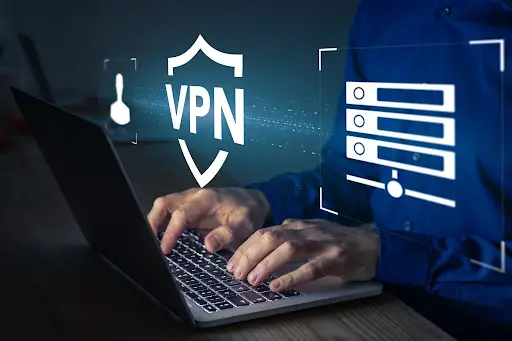With the advent of data proliferation, remote working, and digital commerce, Zero Trust security has been a buzzword in recent years. Organizations are keen to learn how to set up a Zero Trust Network.
When a Zero Trust environment is in place, the IT team in charge of the organization’s networks and cloud environments can identify and validate every user, device, and application that tries to access a company asset. This level of security is something that all modern organizations desire.
What is Zero Trust?
Zero Trust is a network security concept based on the idea that no one or device, within or outside an organization’s network, should be allowed to connect to IT systems or services unless they have been authenticated and continually checked.
Zero Trust is a change away from the “trust but verify” philosophy and toward “never trust, always verify.” No person or device is trusted to access a resource under the Zero Trust architecture until their identity is validated.
This procedure applies to people who are ordinarily within a private network, such as an employee working remotely on a corporate computer or on their mobile device. It also applies to anybody or anything outside the network. It makes no difference if you have previously entered the network. Your identity will not be trusted unless it is validated many times.
Until proven differently, every system, user, and server should be considered untrustworthy in a Zero Trust architecture.
The importance of Zero Trust
Management of identity and access
Device-based access management is clearly old and insecure. Instead of relying on device confirmation, a Zero Trust architecture allows access based on identity verification. Continuous verification is also included, which is important if a valid user session is hijacked. Zero Trust authentication is risk-based, adaptive, and contextual.
Preventing data loss
IT executives have a big obligation to protect against data loss, and many of them are fighting back by deploying Zero Trust solutions. To prevent data loss at all costs, Zero Trust employs real-time monitoring.
A cyber attack can happen in the blink of an eye and at any time. The successful implementation of Zero Trust requires real-time data loss prevention and advanced threat protection policies, particularly inspection for known threats and zero-day attacks.
Real-time monitoring provides a constant picture of what’s occurring on the network while still maintaining smooth access to the network.
Protecting endpoints
Traditional security methods fail if an attacker can get around the weakest link, such as by spreading malware or abusing application flaws. Layering network and endpoint security together with a Zero Trust architecture is more successful. This is because if an attacker gets around one measure, they’ll be met with another, making it increasingly harder for them to succeed.
How can the Zero Trust framework help businesses in 2022?
Cloud environments house mission-critical apps and data, leaving them vulnerable to hackers looking to steal, damage, or hold sensitive information hostage for personal gain. Zero Trust minimizes the attack surface and restricts the effect and severity of an attack, even if the security policy isn’t flawless.
If credentials are stolen or the firewall is hacked, Zero Trust minimizes the amount of harm that can be done. This architecture is more secure than traditional ways for remote work. It boosts productivity and flexibility. When we take into account the fact that according to Upwork, 73% of all departments will have remote workers by 2028, this is an important function of Zero Trust.
Since it employs a centralized monitoring system, Zero Trust also optimizes your current security team. Your team will be able to simply create trustworthy data and acquire insights using Zero Trust. As a consequence, even with fewer security personnel, you can maintain a more secure workplace.
Conclusion
The ever-changing environment of corporate technology might put an organization’s security at risk when it comes to adapting to new requirements. It’s fair that businesses desire to attain both scalability and profitability, but security should always be a priority in any technology decision.
Tech leaders and business managers know that their organizations will not be immune to the security danger as more and more security breaches are publicized each month. Unfortunately, many businesses wait until a new incident occurs before responding. They must always be proactive in order to make their company as secure as possible.
Businesses can be better equipped to face these difficulties if they use Zero Trust. If you’d like your organization to be ready for the future, employing Zero Trust solutions might be a good idea.



